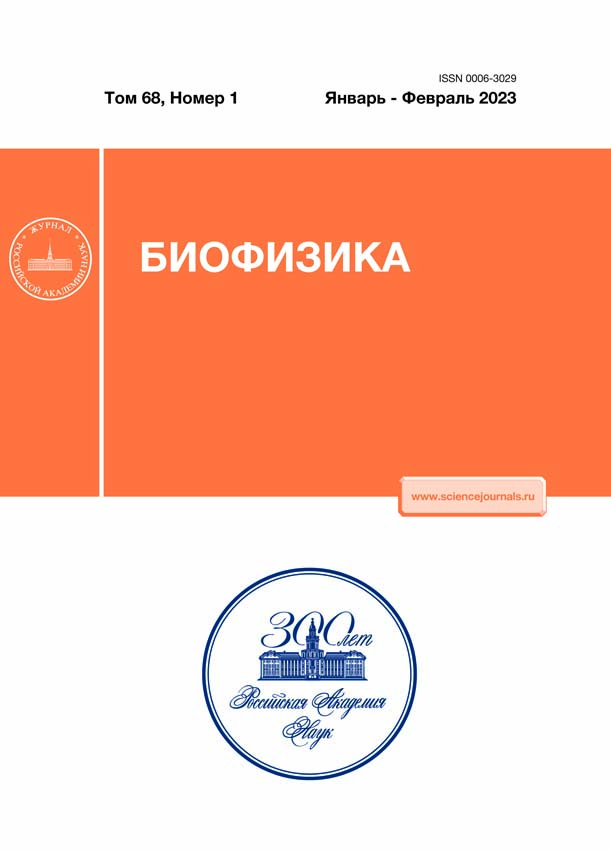Comparative analysis of the nitrogen monoxide content and optical-morphometric characteristics of erythrocyte-containing blood components during storage
- Autores: Akulich N.V1, Zinchuk V.V2
-
Afiliações:
- National Antidoping Laboratory
- Grodno State Medical University
- Edição: Volume 68, Nº 1 (2023)
- Páginas: 79-86
- Seção: Articles
- URL: https://cardiosomatics.ru/0006-3029/article/view/673616
- DOI: https://doi.org/10.31857/S0006302923010088
- EDN: https://elibrary.ru/NZUGLR
- ID: 673616
Citar
Texto integral
Resumo
Flow cytometry was used to analyze the content of intracellular nitrogen monoxide in erythrocyte-containing blood components during blood storage with hemopreservative for 4 weeks. It was found that storing of blood is accompanied by increased levels of intracellular nitrogen monoxide in erythrocytes and thus by a change in optical and morphometric parameters of red blood cells. In the early stages of storage, erythrocytes were represented by discocytes, and during long storage erythrocytes became more spherical (spherocytes) as the percentage of microcytes that accumulated nitrogen monoxide increased and their intracellular hemoglobin levels were decreased.
Palavras-chave
Sobre autores
N. Akulich
National Antidoping Laboratory
Email: akulichn@gmail.com
Minsk Region, Belarus
V. Zinchuk
Grodno State Medical UniversityGrodno, Belarus
Bibliografia
- K. Thangaraju, S. Neerukonda, U. Katneni, et al., Int. J. Mol. Sci., 22, 153 (2021).
- V.V. Zinchuk, D. D. Zhadko, Nitric Oxide 1 (84) 45 (2019).
- А. И. Костин, О. А. Майорова, А. В. Ложкин и др., Трансфузиология, 12 (2), 12 (2011).
- В. В. Зинчук и Е. С. Билецкая, Биофизика, 65, 915 (2020).
- C. Donadee, N. J. Raat, T. Kanias, et al., Circulation
- (4), 465 (2011). M. García-Roa, M. Del Carmen Vicente-Ayuso, M. Bobes, et al., Blood Transfus., 15 (3), 22 (2017).
- R. Stapley, B. Y. Owusu, and A. Brandon, Biochem. J., 446 (3), 499 (2012).
- F. J. Willekens, J. M. Werre, Y. A. Groenen-Döpp, et al., Br. J. Haematol., 141 (4), 549 (2008).
- N. Li, J. Sul, and P. Haydon, Neuroscitnce, 23, 10302 (2003).
- C. Briggs, R. Rogers, B. Tompson, et al., Sysmex J.Int., 11 (2), 63 (2001).
- J. T. Alexander, A. M. El-Ali, J. L. Newman, et al., Transfusion, 53 (11), 2619 (2013).
- B. Sandhagen, C. F. Hogman, C-H de Verdier, et al., Vox Sang, 55, 139 (1988).
- C. Liu, X. Liu, J. Janes, et al., Redox Biol., 2, 211 (2014).
- В. П. Реутов, Успехи биол. наук, 35, 189 (1995).
- S. Suriany, I. Xub H. Liu, et al., Free Radic. Biol. Med., 171, 143 (2021).
- A. H. Tayer, N. Amirizadeh, M. Ahmadinejad, et al., Transfus. Med. Hemother., 46 (4), 224 (2019).
- C. Donadee, N. J. Raat, T. Kanias, et al., Circulation, 124, 465 (2011).
Arquivos suplementares










